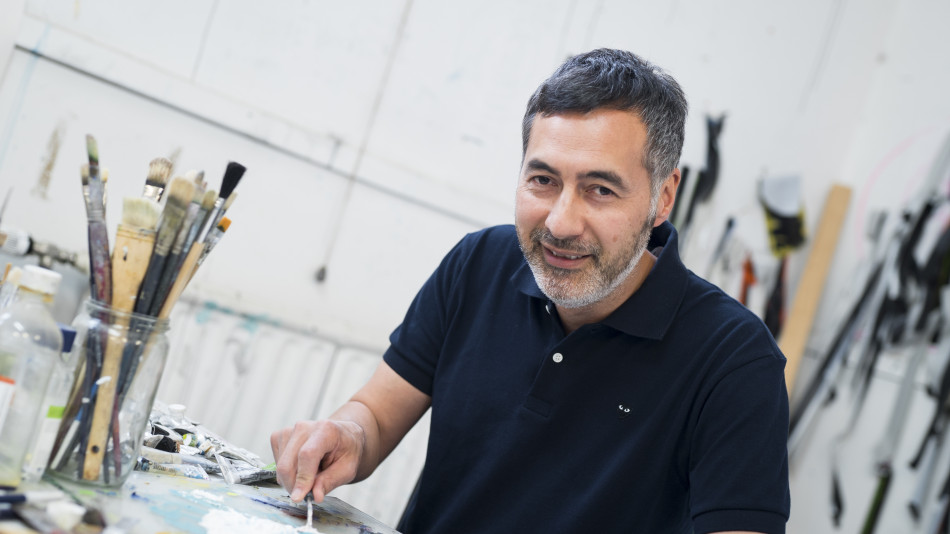Artist Graham Fletcher delights in a curatorial process that, in collaging disparate elements from a wide range of sources, could be likened to that of a magpie, even if his tastes are less concerned with the shiny-bright.
Fletcher’s interests also lie in what social anthropologist James G. Frazer describes as “sympathetic magic”, the perceived mystical energies that can be embodied in an object of power.
A Senior Lecturer at Otago Polytechnic’s Dunedin School of Art, Fletcher is also Studio Coordinator for Painting and Pasifika advisor and has exhibited nationally and internationally.
Of mixed Samoan and European heritage, Fletcher focuses on a fundamental cultural question: how art from indigenous cultures have been appropriated and repurposed into contemporary domestic settings.
“These objects become disenfranchised when placed into new environments,” Fletcher explains.
“There are private collectors who have centuries-old objects that were used in various cultural contexts, including coming-of-age and fertility ceremonies, or to ward off evil spirits. So to see them in a modern home environment is often a strange and unusual experience for me.”
Fletcher is preparing to stage an extensive survey show, featuring works made over 20 years of exhibiting as a professional artist, as part of the 2018 Auckland Arts Festival exhibition.
The Third Space: Ambiguity in the art of Graham Fletcher (Gus Fisher Gallery, 2 March-28 April) incorporates large tracts of what he terms “Lounge-Room Tribalism”.
The theme builds on his doctoral studies (Myth, Magic, Mimicry, and the Cross-Cultural Imaginary; Elam, 2006-2010), during which Fletcher travelled to Europe, visiting galleries and prominent museums.
“I was inspired by the very same ethnographic artefacts that influenced the works of notable artists such as Picasso, Matisse and the Surrealists.”
While wandering through the Centre Pompidou, Paris, Fletcher came across an installation of objects collected by André Breton. It comprised more than 260 pieces, ranging from tribal artefacts, natural objects, antique furniture, stuffed animals and trinkets, to paintings, drawings, sculptures and more.
An accompanying plaque revealed Breton had collected more than 5000 pieces.
“The Pompidou managed to salvage one complete wall from his apartment for permanent display,” Fletcher says. “It was like nothing I had seen before.”
Yet, on a reduced scale, he had.
Fletcher recalls a chance visit to a house in the Auckland inner-city suburb of Mt Eden in the 1990s.
“I had to go and collect an art work at a bungalow in Mt Eden. I knocked on the door and this elderly woman answered.
“I wandered in and, my God, it was like a museum. There were tribal objects all over the place, art works all over the walls, including by key New Zealand artists.
“All this stuff was put together quite nicely. She had obviously taken great care in placing things. She was trying to create some sort of discussion between the works.”
Fletcher’s work, too, addresses the same conversation – the tension that occurs when these different worlds mix.
“It’s about taking something from the Old world and placing it in the New.
“We all do it to some extent. I have a number of carvings and other ethnographic objects at home, although I will say they are of tourist item quality.”
“I think of myself more as a documentarian.
“My works comprise collages of many parts but I don’t distort the cultural objects in any way, apart from making them bigger or smaller.
“I have tried to stay true to the objects.”

